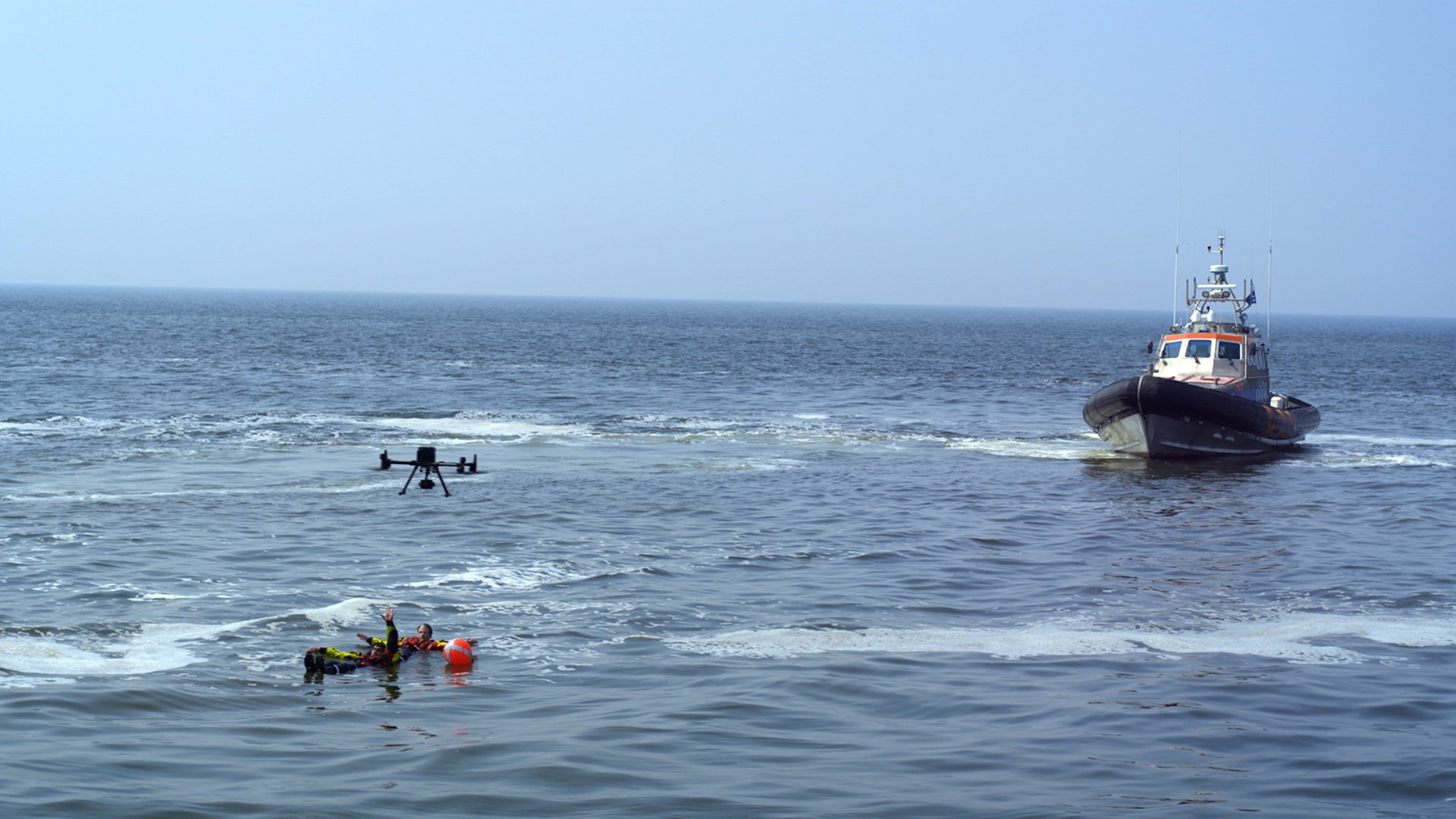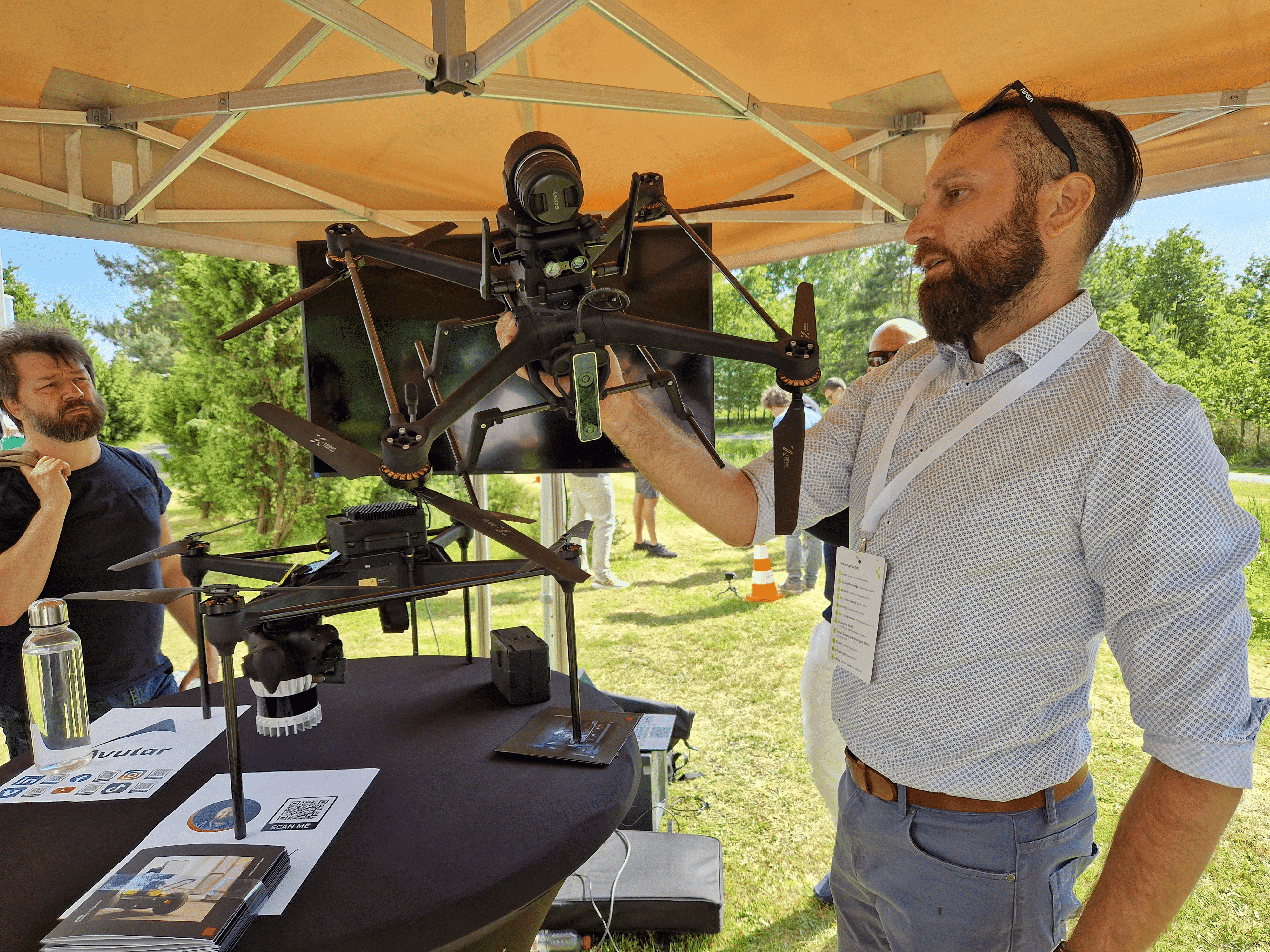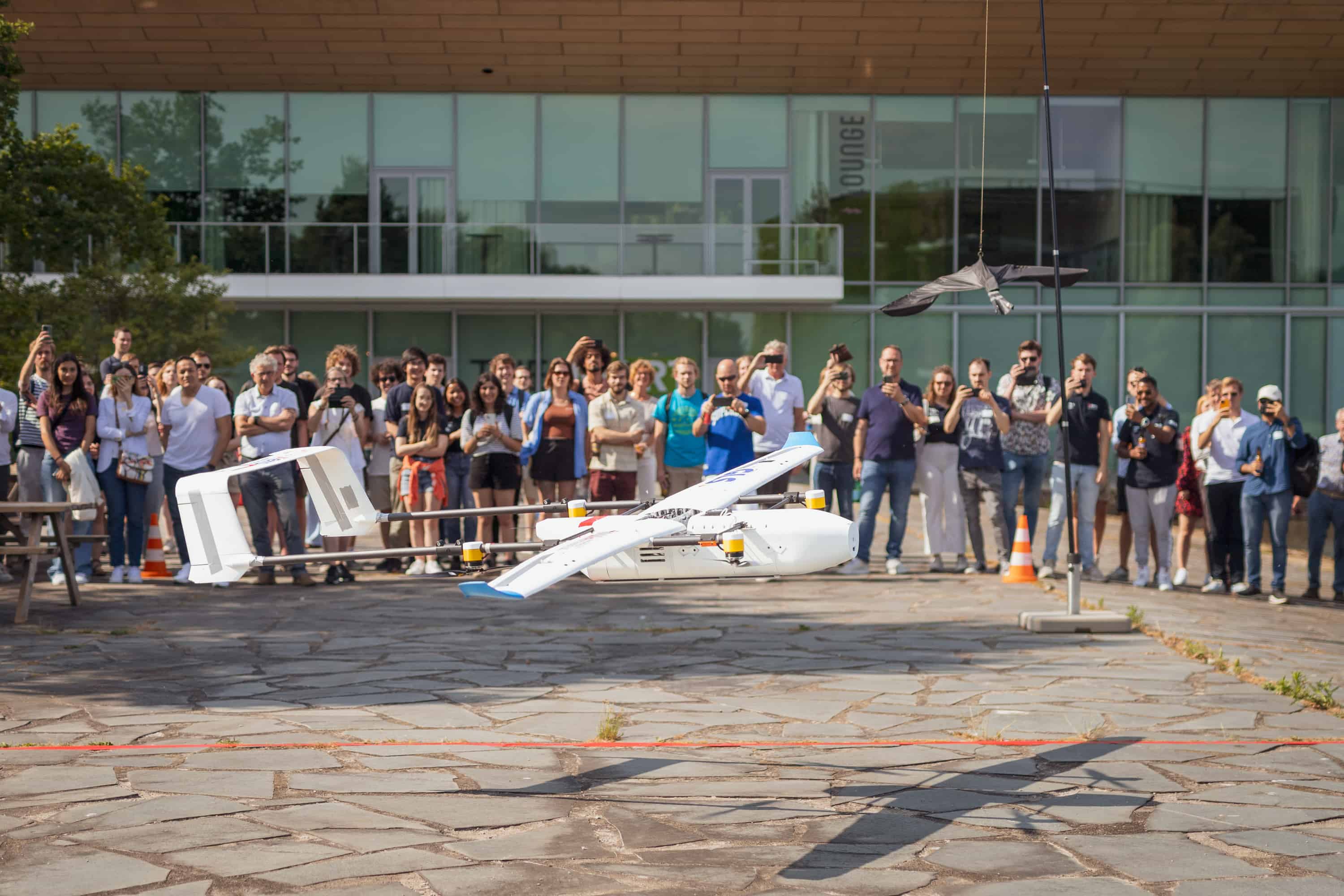
As soon as official permission is issued, the Royal Dutch Lifeboat Society (KNRM) plans to test drones at four different locations: Lemmer, Terschelling, Katwijk/Scheveningen and Hoek van Holland/Stellendam. Six drones have already been purchased and are ready to be deployed. In theory, having such an extra pair of eyes in the sky can save many lives. KNRM swings into action over 2,500 times each year to drag people out of the water to safety. A supportive drone could make these rescues a lot easier.
5G connection
Earlier this year a successful test was conducted off the coast of Scheveningen. KNRM participated in this test together with its partners TNO, KPN, Skytools, Delft Dynamics and Proeftuin op de Noordzee. The drone in question was equipped with two cameras: a thermal camera for detecting body heat and a high-resolution camera. A high-speed 5G connection was also used. Jeroen Kodde, project leader for drones at KNRM, says: “Volunteers from KNRM served as drowning victims. They wore a special survival suit.” He explains that this kind of suit provides a low heat profile: “A normal swimmer radiates much more heat.” Despite this lower heat profile, the drone still managed to spot the “drowners.” A promising result, in other words.
Added value
Based on the data gathered from this test, TNO ultimately wants to develop an algorithm that will allow the drone to automatically detect people in the water, even in rough weather conditions. “The drones and sensors need to be trained in such a way that they can pick out drowning victims under all circumstances,” says Kodde. Until then, KNRM is busy testing and developing its own drones. Kodde: “We want to see what the added value of the drones is and what impact their use has on the organization. For example, do we have enough people to operate the drones? And how can we do this safely? After all, they also need to be able to fly in harsher weather conditions.”
Also read about a German rescue drone with a special flotation device on board

Training scenarios
The drones that the KNRM will conduct tests with, unlike the drone in Scheveningen, do not feature 5G technology. “We use the connections that are currently standard among drones. This is because 5G is still in its infancy. There are no transmitter masts on the water, so we have to wait and see whether we will be able to use this technology in the near future. Our drones are equipped with a video and thermal imaging camera,” Kodde explains. The drones will be used in the coming period for real-life incidents. Training scenarios have also been developed so that tests can be conducted outside of actual rescue operations. The volunteers at the four training locations will also be professionally trained as drone pilots.
Drone as extra support
Kodde thinks the drones can be of great value when preparing for a rescue operation. “If someone is on drone duty and an alarm goes off, they can have the drone fly to the suspected location immediately. We can get a preliminary picture that way and determine which equipment is needed.”
He emphasizes that the use of drones is solely supportive: “Ideally, the drone will already be doing the search work before the crew members turn up with the rescue boat. But of course, it should not be at the expense of regular deployability in rescue operations.” Kodde hopes to have gained enough experience and knowledge by the end of 2022 to come to a final decision on the use of drones.







